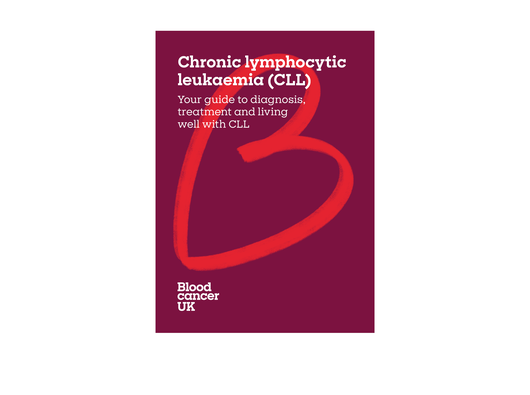What is CLL (chronic lymphocytic leukaemia)?
CLL is a chronic condition, which means it usually develops very slowly. It’s the most common type of leukaemia in adults.
If you have CLL, your body produces white blood cells called lymphocytes that don’t work properly and grow too fast. Normal lymphocytes work as part of your immune system, fighting off infection. But abnormal lymphocytes don’t do this very well. That’s why people with CLL are at higher risk of infection from viruses and bacteria.
As the number of abnormal lymphocytes in your blood rises, the number of normal cells can drop. This causes a range of other CLL symptoms, although some people don’t have any symptoms at first.
"You may not even have heard of CLL before, but you will get used to the new lingo and end up becoming a bit of an expert in your own condition."
Gerard, living with CLL since 2017

Your immune system and CLL
Your immune system is a network of cells, tissues and organs which protect your body against infections such as viruses and bacteria. Lymphocytes play an important role in this by finding and attacking these germs.
Because CLL affects your lymphocytes, it often affects your body’s defences. This means you might get:
- infections that are more severe than usual and last longer
- auto-immune conditions, where your immune system gets confused and starts to attack some of your own tissues.
Your guide to CLL
This free booklet covers:
- finding out you have CLL
- understanding CLL
- coping with watch and wait
- treatment options
- living well with CLL
- real stories of people living with CLL
You can order it for free from our online shop.

Your lymphatic system and CLL
The lymphatic system is a network of thin tubes called lymph vessels that runs around your body. Lymph vessels collect fluid called lymph and return it to your blood.
Along the lymph vessels are glands called lymph nodes. There are many of these in your body. It’s normal for these to swell and become tender when you have an infection – this is what people call swollen glands.
If you have CLL, lymph nodes can swell up because abnormal lymphocytes build up in them. You will notice this most easily in your neck, armpits and groin, but you may be less aware of swollen lymph nodes deeper in your body.
CLL can also cause swelling in your spleen, an important organ in your immune system which sits behind your ribs on the left side of your body, next to your stomach.
Small lymphocytic lymphoma (SLL)
Small lymphocytic lymphoma (SLL) is essentially the same disease as CLL and is treated in the same way. The only difference is where the abnormal cells are found.
If abnormal lymphocytes are only found in the lymph nodes or spleen and not in the blood, the diagnosis is SLL. If abnormal lymphocytes are found in the blood, the diagnosis is CLL.
All the information in our pages about CLL is relevant for people with SLL.
Causes of CLL
We know that CLL is caused by genetic changes that happen over the course of a lifetime. There are many different changes that can lead to CLL, and these affect how the CLL behaves. That’s why people have different treatments and outcomes even though they are all diagnosed with CLL.
We don’t yet know why these genetic changes happen. For some people, it may be down to chance, but there are some risk factors – things that may make it more likely for someone to develop CLL:
CLL usually affects older people. It’s rare for younger people to get CLL, and children don’t get it. More than nine in ten people (90 per cent of cases) are 55 or over when they’re diagnosed.
Men are about twice as likely as women to get CLL – we don’t know why.
A close relative (child, brother, sister or parent) of someone with CLL has a higher chance than others of developing the condition, but the risk is still low.
CLL is more common in white people – we don’t know why.
CLL and the risk of skin cancer
People with CLL have a higher risk of skin cancer than other people, and the risk is higher for those who have had treatment.
It’s important to be aware of this and follow standard sun safety advice as soon as you get your diagnosis. It’s also a good idea to check your skin regularly and tell your hospital team or GP if you notice any changes.
How are you feeling?
Many people find it helps talk to people who've also been diagnosed with blood cancer. Our online community forum is somewhere you can go for support from people who’ll listen without judgement and share what they’ve learned about living with blood cancer.
Have a look and see what conversations are happening today.
